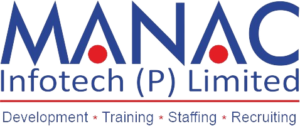AWS
- Introduction to AWS
- Benefits of Cloud Computing
- Types of Cloud Computing Models
- AWS Global Infrastructure
- IAM Concepts and Components
- IAM Users and Groups
- IAM Policies and Permissions
- Multi-Factor Authentication (MFA)
IAM Roles and Federation
- Amazon Simple Storage Service (S3)
- Amazon Elastic Block Store (EBS)
- Amazon Elastic File System (EFS)
- AWS Storage Gateway
Data Transfer Services
- Basics of Linux
- Linux Command Line Interface (CLI)
- SSH and Key Pairs
- Amazon Elastic Compute Cloud (EC2)
- EC2 Instance Types
- EC2 Security Groups
- EC2 Elastic Load Balancer (ELB)
- Auto Scaling
- Systems Manager Features and Benefits
- Systems Manager Automation
- Systems Manager Run Command
- Systems Manager Patch Manager
- Domain Registration and DNS Management
- Route 53 Routing Policies
Health Checks and Failover
- VPC Concepts and Components
- VPC Subnets and Route Tables
- VPC Security Groups and Network ACLs
- VPC Peering and Virtual Private Gateway
- Amazon Relational Database Service (RDS)
- Amazon DynamoDB
- Amazon ElastiCache
- Amazon Redshift
- AWS Shared Responsibility Model
- AWS Identity and Access Management (IAM)
- AWS Key Management Service (KMS)
- AWS Web Application Firewall (WAF)
AWS Shield
- AWS Lambda
- Amazon Simple Queue Service (SQS)
- Amazon Simple Notification Service (SNS)
- Amazon Simple Workflow Service (SWF)
- AWS Step Functions
- AWS Database Migration Service (DMS)
- AWS Server Migration Service (SMS)
- AWS Snowball
- AWS Snowmobile
- AWS CloudFormation
- AWS Elastic Beanstalk
- AWS CodeCommit, CodeBuild, CodeDeploy, and CodePipeline
- AWS OpsWorks
- Amazon CloudWatch
- CloudWatch Metrics and Alarms
- CloudWatch Logs and Events
- AWS Trusted Advisor
- AWS Organizations
- AWS Consolidated Billing
- Cross-Account Access and IAM Roles




